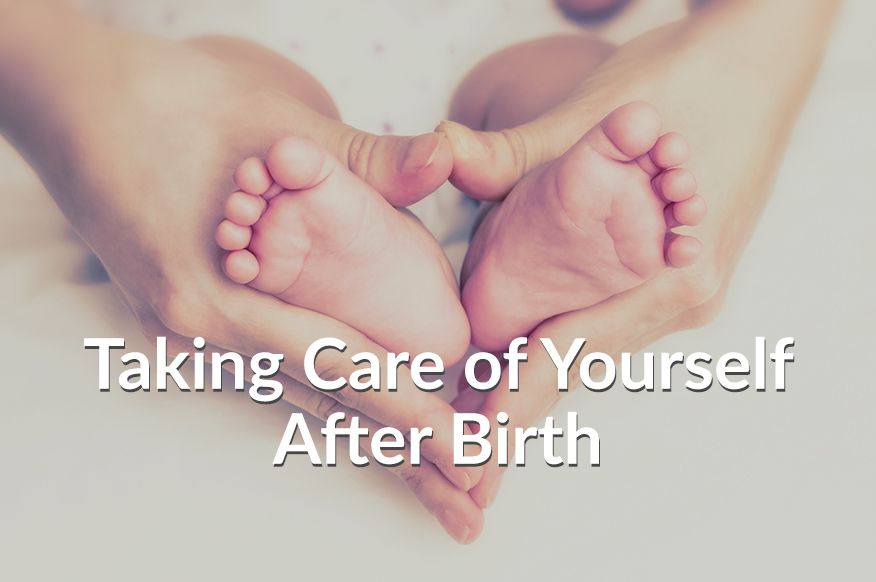
Taking Care of Yourself After Birth
As a new mom, you have gone through many changes over the last nine months of your pregnancy and giving birth. With so many changes, you may be feeling overwhelmed with balancing becoming a mom and how to best take care of yourself.
Your body has gone through a huge transformation and it will take equally as long for your body to start feeling like your own again, so be kind to yourself, and enjoy the amazing feat that your body has gone through, and be assured that you will be able to get back to what you love.
Nap When You Can
Whenever possible, nap at the same time as your baby! We know there are a million things to do around the house, but sleeping will help your body continue to heal more than anything else. It also contributes to improving your mood and memory meaning- less mommy brain fog!
Feed Yourself Well
When it comes to your postpartum care, diet plays an important role. Ensuring that you are eating a variety of foods will help to give you much needed energy throughout the day. Protein rich foods such as cheese, yogurt, beans and meats help to keep your body strong.
Equally as important as protein are fruits and veggies. For each meal that you eat, aim to fill half of your plate with fruits and vegetables.
Be Kind to Your Body
- The easiest exercise to begin after delivery to reconnect to your core and pelvic floor is diaphragmatic breathing.
- Also remember to gently stretch your Pecs and Wrists throughout the day to prevent wrist, shoulder and neck pain from holding and feeding your baby:
-
- Positions that involve split leg postures and rotation, such as a warrior pose in yoga
- Lifting yourself directly out of bed without engaging your core first, this can considerably worsen a diastasis. Consider rolling onto your side first and then pushing up with your arms if you feel too weak.
- Bending just from the hips when you pick up your baby, make sure the legs are bent as well to engage your glutes for the lift.
- Low Back and SI Pain: Though low back pain is common in nearly every pregnancy, about a quarter of women continue to experience pain postpartum. In some cases, the SI joint is the cause of continued back pain. Physical therapy treatment can help to reduce low back and SI pain with manual therapy and postural training.
- Wrist/Neck and Shoulder Pain: Wrist discomfort from breastfeeding and carrying the baby can be normal as you try to gain the muscle strength for these new found tasks, however, if it is consistent and does not diminish around 3 months, physical therapy can help with manual therapy treatment to realign your back and hips
- Diastasis Recti: Abdominal separation does happen, and some are better at naturally closing the abs than others, however if the separation is still present 3 months postpartum, or you are having difficulty getting back do your normal exercise routine, physical therapy can help bring the abs back together with fascial release work and specific exercises meant to help the muscles join again.
- Perineal Tearing/Scarring and Tightness: The delicate perineal tissues will stretch and possibly tear during birth. Physical therapy can help to break up scar tissue and relax the perineal tissues.
- Pubic Symphysis Pain: Pubic symphysis pain is often triggered by hormonal changes during pregnancy and in some cases, can continue to cause pain postpartum. Manual therapy coupled with stability exercises can reduce this pain.
- Pain with Intercourse: Discomfort during intercourse is somewhat normal for the first few times after you’ve been cleared by your OB/GYN, however pain and discomfort that lingers for greater than a couple months can also be treated with physical therapy using scar tissue release techniques and providing education on positioning based on where the uterus (and other structures) have settled.
- Urinary/Fecal Incontinence: Incontinence can be present for a few weeks postpartum, but really should disappear very quickly after delivery, if it persists, physical therapy can help with a tailored program to meet your needs for strengthening and flexibility within the pelvic floor.
- Pelvic Heaviness/Pain due to Prolapse: Heaviness can be noticed for up to 3 months as the uterus moves back up into position, however if it continues to be bothersome after this, physical therapy can help you regain control and strength of the pelvic floor to better support your uterus and bladder.
Wrist Stretch

Pec Stretch

Thoracic Stretch

It is generally recommended to avoid the following postpartum, until your OB/GYN gives you the go ahead:
Ask for help when you need it
During pregnancy and postpartum, your body has gone through many changes and your body may not feel the same way that it did pre pregnancy. Though this is a normal feeling, you know your body best and it is always recommended to seek postpartum care if you feel something is not right.
The good news is that Physical Therapy can help with many of these issues postpartum, including:
If you are seeking postpartum care, contact your local Therapydia physical therapy clinic’s pelvic floor specialist. They can work with you to get you back to feeling pain free.